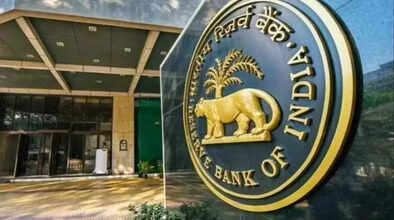RBI Eases Loan Rules: More Credit Against Gold and Silver, Stricter Financial Oversight

The Reserve Bank of India (RBI) has announced a fresh set of reforms aimed at making lending easier and more flexible for both borrowers and banks. While the new measures promise cheaper loans and broader access to credit, the central bank has simultaneously tightened financial monitoring to ensure a stronger and more transparent banking system.
Key Highlights of RBI’s New Loan Rules
-
Borrowers can expect more flexible repayment terms and quicker adjustments in lending rates.
-
Banks will be able to provide higher credit against gold and silver, widening the scope beyond jewellers to include more manufacturers.
-
Urban cooperative banks in smaller towns will be allowed to expand lending in this segment.
-
Capital-raising norms for banks have been eased, making it simpler for lenders to strengthen their balance sheets.
-
Weekly reporting to credit bureaus will replace monthly updates, boosting risk monitoring.
Direct Benefits for Personal Loan Borrowers
One of the biggest beneficiaries of these reforms will be individuals seeking personal loans. RBI has clarified that banks will no longer need to lock in certain borrower charges for a fixed three-year period; instead, these charges can be reduced at any time.
Additionally, banks now have the option to let customers switch from a floating interest rate to a fixed rate at the reset point. This move is not mandatory but gives borrowers greater control over managing their loan costs.
The RBI has also given banks more flexibility in adjusting the interest-rate spread—the difference between the benchmark rate and the lending rate. This ensures that customers may see quicker reflection of market conditions in their loan pricing.
Gold and Silver Loans Get Wider Access
The central bank has expanded the scope of loans backed by gold and silver. Previously, only jewellers could avail of working capital loans against these precious metals. Now, all manufacturers using gold or silver as raw material will be eligible for such credit.
This is expected to particularly benefit small-scale businesses and artisans who rely on these metals for production. Moreover, small urban cooperative banks in tier-3 and tier-4 cities have been allowed to participate in this business, ensuring deeper credit penetration in semi-urban and rural areas.
Easier Capital Raising for Banks
To further support the financial sector, the RBI has eased restrictions on raising capital. Banks can now use foreign currency instruments and rupee-denominated bonds issued abroad as part of their additional Tier-1 capital.
This reform is expected to reduce fundraising hurdles and give banks more room to expand lending capacity. Ultimately, this could result in more liquidity in the market and cheaper loans for consumers and businesses alike.
Stronger Monitoring for Safer Banking
Even as RBI has opened up lending, it has made risk monitoring stricter. Under the new draft framework, banks and financial institutions will be required to submit data to credit bureaus every week instead of once a month. This will help improve transparency, reduce bad loans, and ensure that borrowers with weak repayment records are identified more quickly.
RBI has also proposed longer repayment tenures in certain loan categories, along with tougher exposure limits to reduce systemic risks. The draft proposals are open for public and expert feedback until October 20, 2025, after which the final regulations will be rolled out.
Why These Changes Matter
These reforms strike a balance between ease of borrowing and robust regulation. For the common borrower, loans will become cheaper, more flexible, and easier to switch between interest rate options. For small businesses, especially those dependent on gold and silver, access to credit will expand significantly. For banks, simpler capital-raising rules will make lending operations more sustainable.
At the same time, tighter reporting norms and enhanced oversight will strengthen the banking sector against potential risks. By modernizing lending practices while keeping a watchful eye on risk exposure, the RBI is aiming for a healthier and more resilient financial ecosystem.

